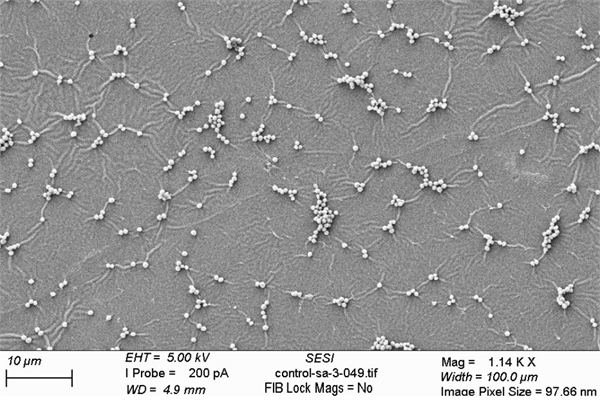
The antimicrobial coating developed by the University of Nottingham’s School of Pharmacy in collaboration with Indestructible Paint demonstrates strong potential in reducing infection transmission across healthcare, transport, and industrial sectors.
Scientists from the University of Nottingham’s School of Pharmacy, in collaboration with Indestructible Paint, have developed a new bacteria-killing coating, trialled in a specialist paint that could revolutionise hygiene standards across a range of industries.
The newly developed paint incorporates chlorhexidine, a powerful antimicrobial agent commonly used by dentists to treat mouth infections and for pre-surgical cleaning. Trials have shown the paint effectively kills a wide range of bacteria and viruses, including hard-to-eradicate pathogens such as MRSA and COVID-19.
“It’s hugely exciting to see this research being applied in a practical way. In our initial research we incorporated the disinfectant into the polymer to create a new antimicrobial paint which has excellent efficacy, it also doesn’t spread into the environment or leach from the surface when touched. This new study showed clearly that surfaces with this paint applied had no bacteria and as soon as it dries it is active. By adding this to paint we can create an effective bacteria killing coating that is easy to apply and cost effective,” has stated Felicity de Cogan, Associate Professor in Pharmaceutical Science of Biological Medicines.
Published in Scientific Reports, the study details how the paint-on resin activates once dried, providing an antimicrobial coating
suitable for use on a variety of plastic and hard, non-porous surfaces. Beyond hospital environments, the team is also exploring its application in the transport and aerospace industries.
“We are always looking for new ways to innovate with our products and this new material creates an opportunity to make a product that could have a positive impact on preventing the growth and spread of bacteria and viruses in a wide range of environments. We work across many industries where this would be a huge benefit, for example coating aeroplane seats and tray tables, areas where bacteria are known to grow. It’s still in the early stages but we look forward to further testing with the aim of rolling this out commercially,” has added Brian Norton, Managing Director of Indestructible Paint.
Surfaces, particularly in medical settings, are known to act as reservoirs for bacteria, posing ongoing infection risks despite rigorous cleaning protocols. In hospitals, contaminated surfaces such as beds and toilet seats can contribute to the spread of infections that often require antibiotic treatment. Similarly, in public spaces like aeroplanes, surfaces such as tray tables and seating can harbour infectious microorganisms for extended periods — sometimes lasting several months.
“Paint is widely used as it is a versatile, cheap and durable material that can be applied to any surface. These plastic and metal surfaces found widely in public spaces do have drawbacks. Research has shown that contaminated surfaces, can act as a reservoir of antimicrobial resistance genes, encouraging the spread of antimicrobial resistance across bacterial species through horizontal gene transfer despite deep cleaning practices. It is paramount that new technologies such as this antimicrobial paint are developed to prevent the spread of pathogenic microorganisms to vulnerable patients and address the ever-increasing threat of antimicrobial resistance,” has concluded Felicity de Cogan.